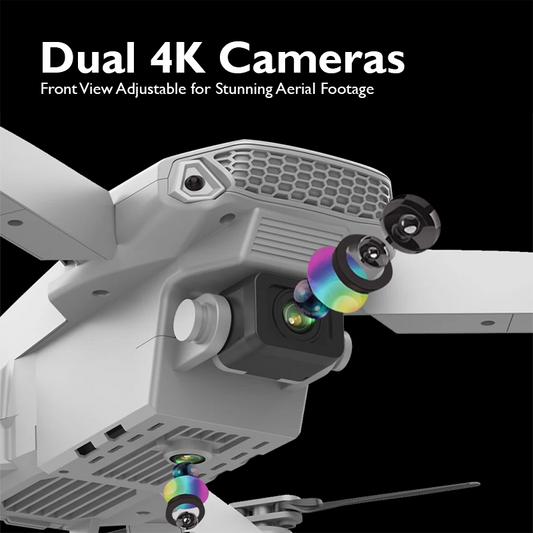Using Drones for Roof Inspections: A Detailed Guide

In the ever-evolving landscape of technology, drones have emerged as a revolutionary tool in various industries, and roof inspections are no exception. The traditional methods of inspecting roofs often involve risks, time, and significant costs. However, with the advent of drone technology, conducting roof inspections has become more efficient, safe, and cost-effective. In this detailed guide, we will explore the benefits of using drones for roof inspections and provide valuable insights into how this innovative approach can revolutionise the way we maintain and assess the condition of roofs.
Understanding the Basics

What Are Drones?
Drones, also known as Unmanned Aerial Vehicles (UAVs), are remotely piloted aircraft that can be equipped with various sensors and cameras. These devices are controlled by operators on the ground, allowing them to navigate through the air and capture high-resolution images and videos.
Importance of Roof Inspections

Regular roof inspections are crucial for maintaining the structural integrity of buildings and ensuring the safety of occupants. Inspecting roofs helps identify potential issues such as leaks, damage, or deterioration early on, preventing more extensive and costly repairs in the future. Traditionally, roof inspections involved manual assessments, which could be time-consuming and hazardous.
Advantages of Using Drones for Roof Inspections
1.Enhanced Safety
Safety is paramount when it comes to roof inspections, especially for large or complex structures. Drones eliminate the need for inspectors to physically climb onto roofs, reducing the risk of accidents and injuries. This is particularly beneficial for inspecting roofs with steep slopes, inaccessible areas, or those posing safety challenges.
2.Time Efficiency
Drones significantly reduce the time required for roof inspections. Traditional methods might involve hours or even days of manual inspection work, depending on the size and complexity of the roof. Drones can quickly navigate the entire area, capturing comprehensive data in a fraction of the time it would take traditional methods.
3.Cost-Effectiveness
Traditional roof inspections often involve considerable costs associated with labor, equipment, and potential repairs. Drones offer a cost-effective alternative by streamlining the inspection process and reducing the need for extensive manpower. The initial investment in a drone and its equipment can result in substantial long-term savings for property owners.
4.Detailed Imaging
Equipped with high-resolution cameras and sensors, drones provide detailed and accurate imaging of roofs. This level of precision allows inspectors to identify even minor issues that might go unnoticed during traditional inspections. The comprehensive data captured by drones enables better decision-making and more effective planning for maintenance and repairs.
5.Accessibility
Drones can access areas that might be challenging or unsafe for human inspectors. This includes inspecting roofs with intricate designs, multiple levels, or locations that are otherwise difficult to reach. The ability to navigate through tight spaces and capture data from various angles makes drones a versatile tool for roof inspections.
6.Real-Time Monitoring
Drones equipped with live-streaming capabilities allow for real-time monitoring of the inspection process. This feature enables inspectors, property owners, and other stakeholders to view the condition of the roof as the drone conducts the inspection. Real-time monitoring enhances communication and collaboration among involved parties.
Steps to Conducting a Drone Roof Inspection

1.Pre-Flight Planning
Before conducting a drone roof inspection, thorough pre-flight planning is essential. This includes checking weather conditions, obtaining necessary permits, and outlining the specific areas to be inspected. Planning ensures a smooth and efficient inspection process.
2.Equipment Setup
Ensure that the drone is equipped with the appropriate cameras and sensors for roof inspections. High-resolution cameras, thermal imaging, and other specialised equipment can enhance the quality of the data collected during the inspection.
3.Safety Checks
Perform a pre-flight safety check to ensure that the drone is in optimal condition. Verify the battery status, GPS signal, and overall functionality of the drone. Safety checks are crucial to prevent mid-flight malfunctions that could compromise the inspection.
4.Flight Execution
During the flight, the drone operator should follow the predetermined flight path, capturing images and videos of the entire roof surface. The operator can adjust the drone's altitude and angle to obtain detailed data from various perspectives.
5.Data Analysis
Once the drone has completed its flight, the captured data needs to be analysed. This involves reviewing images and videos to identify any issues, anomalies, or areas that require closer inspection. Advanced software tools can assist in data analysis and interpretation.
6.Reporting
Compile a comprehensive inspection report based on the data collected by the drone. Include detailed findings, images, and recommendations for any necessary repairs or maintenance. A well-documented report facilitates communication with property owners, insurers, and maintenance teams.
Overcoming Challenges

While drone technology offers numerous benefits for roof inspections, there are also challenges to be addressed. These include regulatory compliance, potential technical issues, and the need for skilled operators. Staying informed about local regulations, ensuring regular maintenance of drones, and providing proper training for operators can help overcome these challenges.
In conclusion, using drones for roof inspections is a game-changer in the field of building maintenance and safety. The advantages of enhanced safety, time efficiency, cost-effectiveness, detailed imaging, accessibility, and real-time monitoring make drones a valuable tool for property owners, inspectors, and maintenance teams. By following the outlined steps for conducting a drone roof inspection and addressing potential challenges, stakeholders can harness the full potential of this innovative technology. Embracing drones for roof inspections is not just a modern approach; it's a step towards a safer, more efficient, and sustainable future in building maintenance.
Explore a variety of drones at our online drone store.
Happy Flying!











